Do Birds Fly At Night? What You Need To Know
Last Updated on
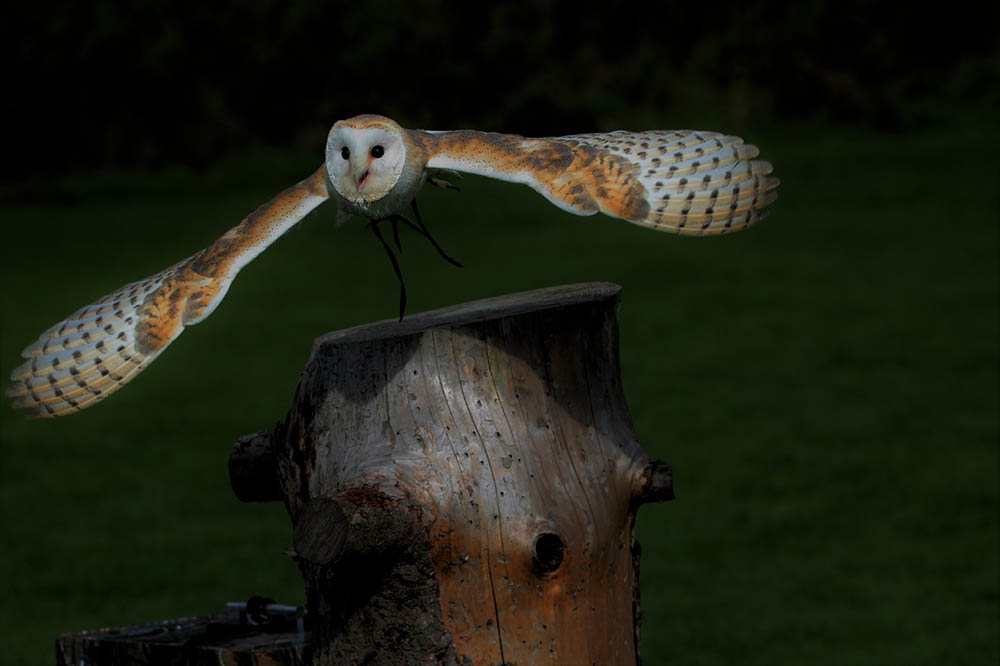
Have you ever wondered if birds fly during the night? Well, yes! Some birds fly during the night. But it usually depends on the bird species.
Not only do most birds fly at night, but they have several reasons to do so. One of the main reasons is that there are fewer predators at that time. Also, the nighttime weather conditions are more favorable for flapping wings without obstructions.
We’ll discuss more of these reasons later in this guide. We’ll also look at several birds that fly during the night. So, keep reading to learn more!

What Birds Fly At Night?
Birds that fly during the night are called nocturnal birds. Nocturnal means “of or relating to the night”. These birds are active in the dark.
Many animals that hunt at night have specific adaptations to help them see their prey in the dark. Birds that hunt during the night also have adaptations to help them see in the dark.
Most nocturnal birds are more active in the darkness than during the day. They have adapted to a lifestyle that allows them to see well in low light conditions. It’s crucial when they are flying around without any streetlights.
Some of the birds that fly during the night include:
The 6 Birds That Fly At Night
1. Owls

Owls are birds of prey. It means they hunt other animals for food. Usually, they catch rodents, insects, and other birds, many of which are active at night.
These birds have several adaptations that help them in their nocturnal lifestyle. Their eyes can see well in the dark. There is a specific feature in their eyes called a tapetum lucidum. It allows more light to enter their eyes and provides them with better vision. The eyes don’t move in their sockets as human eyes do. Instead, owls have to turn their heads to look around!
Owls also have facial feathers that direct sound into their ears and help them hear at night. They can also fly quietly, thanks to special feathers that muffle the sound of their wing beats. It helps them sneak on prey without being heard.
2. Petrel
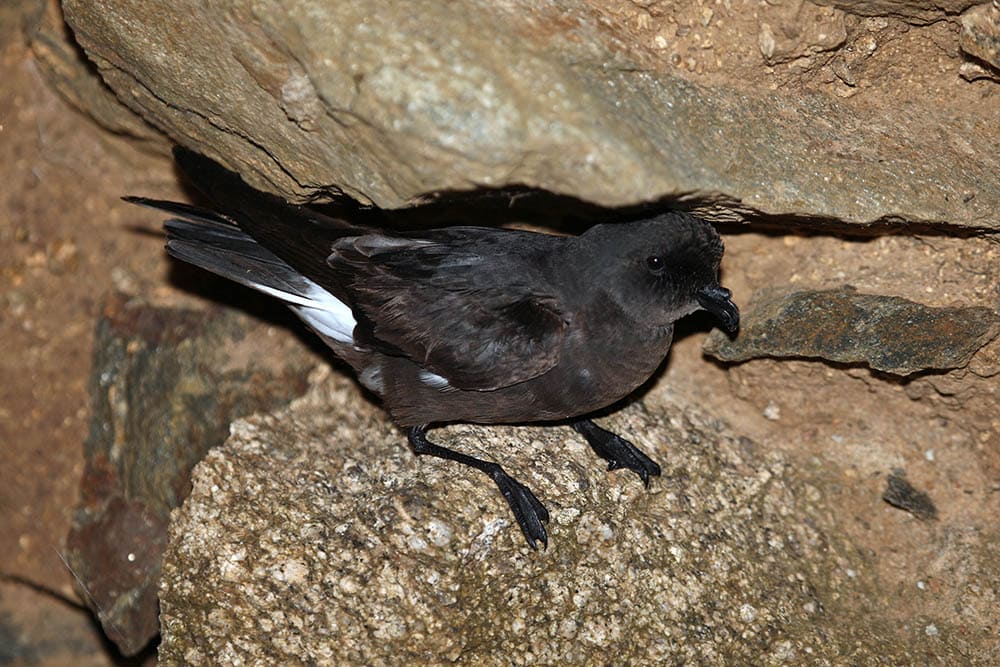
Petrels are also known as tubenoses or fulmarine petrels. They are a family of seabirds that live in all the world’s oceans. They have a long lifespan and form monogamous pairs that last for years.
Petrels spend most of their lives on the water and come to land only to breed. Most of them are nocturnal. It means they hunt and travel during the night. They have a distinctive tube-like nostril on their long beak. They use it to smell fish underwater and locate other food sources.
Their wings are long, narrow, and pointed. They are perfect for gliding through the air and skimming over the water’s surface.
These birds seem to walk on top of the sea. They bob up and down in the waves rather than dive under them. Larger species are called fulmars.
Petrels eat fish and crustaceans. They find them by diving underwater or picking from the surface during flight.
3. Nightjar

The nightjar is a medium-sized nocturnal bird found throughout the world, except in polar and desert regions. They are insectivorous birds that eat moths, beetles, and flying ants.
They perch on trees or shrubs during the day and fly as soon as dusk falls. They have camouflage feathers that make them look just like tree bark when they sleep, making it easy to hide from predators.
They migrate from one place to another at night in search of food. They hunt near cities, towns, and highways with streetlights. They have a big beak that allows them to catch insects in midair.
These birds are also called goatsuckers because of an old myth about them feeding on goats’ milk.
4. Night Heron
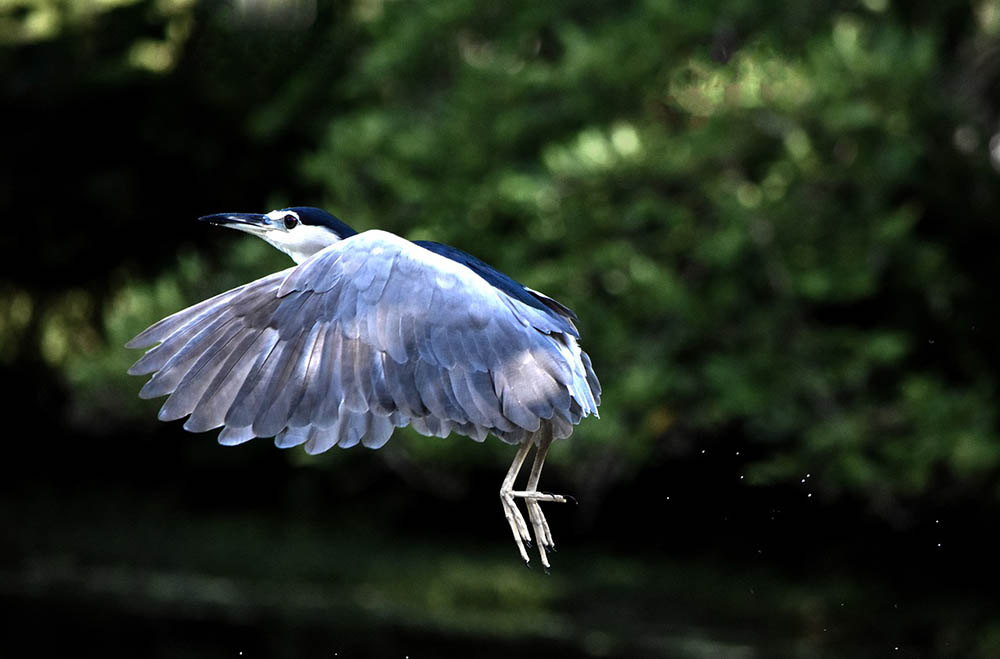
The night heron is a medium-sized heron that has a global distribution. It’s often referred to as a “night” bird. It is found in both freshwater and saltwater habitats. In North America, this species may be confused with the yellow-crowned night-heron, which is also common in North America.
Most night herons have gray, black, or white feathers. But some have reddish-brown feathers on the back of their heads and necks.
These birds hunt for food using stealth in the twilight hours. It gives them an advantage over other wading birds that require brighter light to see their prey.
Night herons eat small fish, crabs, frogs, insects, and small snakes. They also eat fruits. They catch their prey at night by wading in shallow water and holding it with their bills.
5. Frogmouth
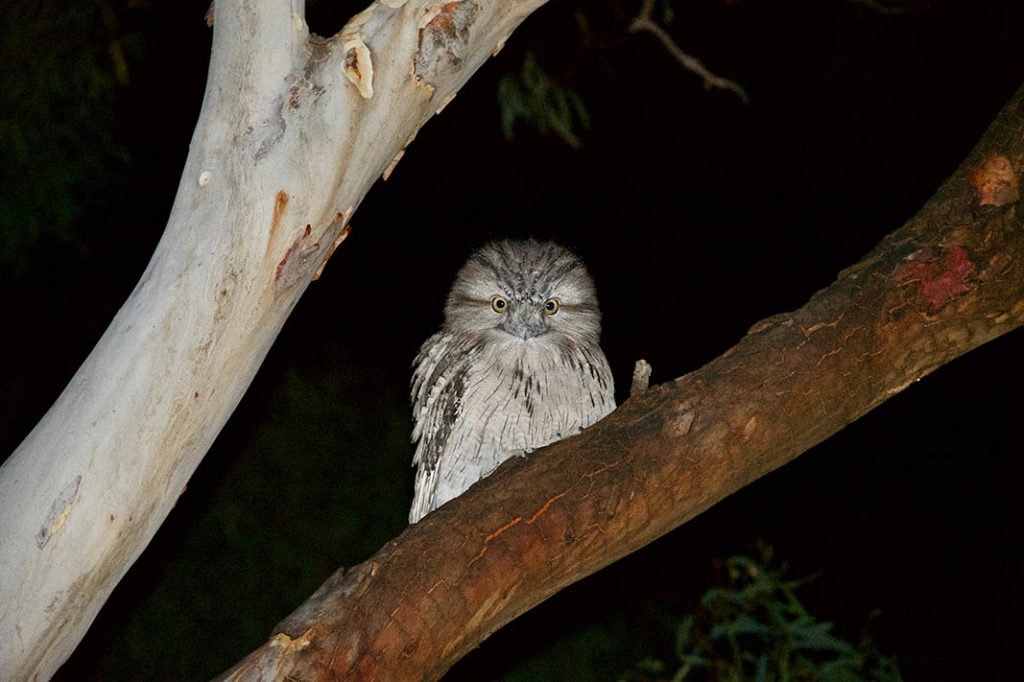
The frogmouth is native to Australia. Frogmouths are active after dark. They spend their days sitting quietly on low, horizontal branches or on the ground. They need to rest during the day to fly at night.
To hide from predators during the day, they tuck their tiny legs into featherless patches on their bellies. This way, they look like broken branches.
These birds have wide mouths and strong legs, which they use to catch insects, worms, and spiders at night. They catch a variety of small prey by hunting from tree branches or by dropping onto the prey from above.
6. Poorwills
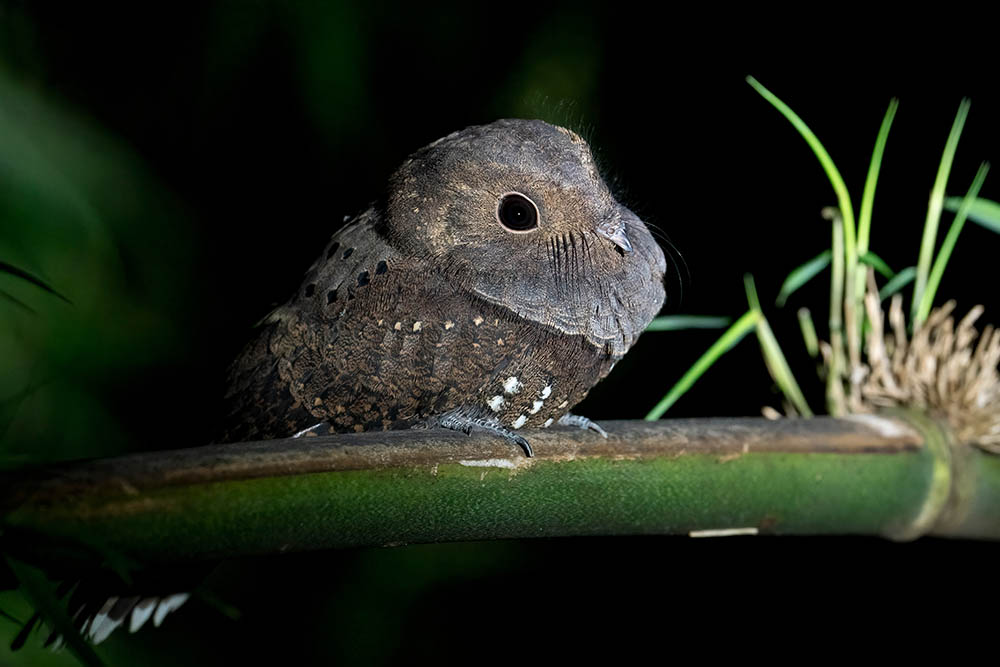
These birds fly at night and forage for insects and other invertebrates. They eat seeds, spiders, and other tiny arthropods, and they can survive on a single meal for several weeks when needed.
Their flight is slow and buoyant, with little or no wing flapping. Their habitat is grassland, desert scrubland, sagebrush, and pinyon-juniper woodland.
Poorwills aren’t just nocturnal but crepuscular as well. It means they’re most active at dusk and dawn.
Why Do Birds Fly At Night?
Have you ever wondered why birds fly at night? Here are several reasons for this behavior.
To Find Mates
Most birds that fly at night do so to find a mate or a place where they can nest their eggs. They will use the time around dusk to call out for mates and mark their territory. The male birds fly as high as possible. Then, they swoop down, making sharp turns with a booming sound to attract females.
Also, they dive-bomb any other males nearby. The females also fly up high before diving down. But their diving is not as steep as the males.

To Find Food
Nocturnal birds will fly around at night searching for food, usually insects. These birds are known as nocturnal foragers. They include nightjars which use their beaks to scoop up insects in-flight.
Another example is the owl. They use their exceptional hearing abilities to locate and consume prey in the dark. Owls will sometimes even hunt in broad daylight, though!
Safety from Predators
Some bird species fly at night to avoid daytime predators such as hawks, snakes, and foxes.
Birds may also use their nighttime flight to escape human activity, noise, and lights during the daytime. Some birds will fly in large flocks at night as a group for added protection.
Migration
Migration is the most obvious explanation for bird flight at night. Birds fly at night because it’s the safest and easiest for them to move as there are fewer obstacles between them and their destination.
Migrating birds fly high when they travel at night. It may seem a risky strategy for birds that are not strong fliers. But soaring high makes it possible for them to travel long distances with little effort and without stopping on the way.
It can be crucial if their migratory journey involves crossing a body of water where they won’t find many places to stop and rest. Also, it helps them avoid predators that may be active during daylight hours.
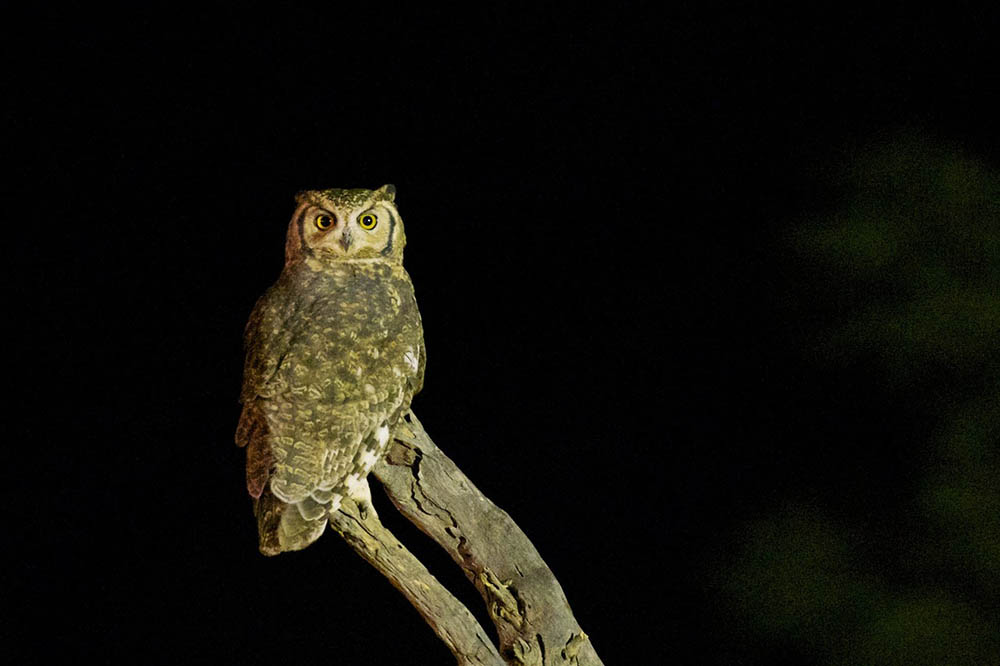
Adaptations of Nocturnal Birds
Now that you know why birds fly during the night, how are nocturnal birds adapted to flying at night?
Excellent Eyesight
Many nocturnal birds have a specialized eye structure. It allows them to see in the dark. These eyes are also larger than those of other birds.
They have a layer of tissue behind the retina called tapetum lucidum. It acts as an enhanced mirror to reflect light and improve vision in poor lighting conditions.
Owls are the most notable example of this adaptation. But many nocturnal birds such as nightjars and nighthawks also have excellent night vision.
Excellent Hearing
Birds that fly at night have excellent hearing capabilities. They have keen ears and can hear the faintest sounds, even the rustle of a mouse in a bush or a grass blade.
The ear holes on both sides of a nocturnal bird’s head help it listen to distant sounds. Through these ear holes, they identify the location of prey without even seeing them.
Great Stealth
Nocturnal birds have great stealth. They are easy targets for predators, and they need to sneak up on prey. They fly with the wind and make no sound. Their wings are larger than those of other birds. They are also broader and long, enabling them to fly without making a sound. Their dark color blends with the sky and makes it challenging for predators to locate them.
- You might also be interested in: Why Do Birds Bob Their Heads? Exploring Bird Behavior

In Conclusion
Nocturnal birds are adapted to flying at night. While some species of birds are nocturnal and are most active during the night, others are diurnal. Diurnal birds are active during the day, but they can also fly at night if in danger or when migrating. But they are not adapted to flying at night. Usually, all birds can fly at night when fleeing from predators. So, there are many reasons why birds fly at night, irrespective of whether they’re diurnal or nocturnal. Now, if you see a bird flying at night, you will know one of the reasons why.
Featured Image Credit: Kevinsphotos, Pixabay
Table of Contents
About the Author Robert Sparks
Robert’s obsession with all things optical started early in life, when his optician father would bring home prototypes for Robert to play with. Nowadays, Robert is dedicated to helping others find the right optics for their needs. His hobbies include astronomy, astrophysics, and model building. Originally from Newark, NJ, he resides in Santa Fe, New Mexico, where the nighttime skies are filled with glittering stars.
Related Articles:
How to Collimate Binoculars: 9 Expert Tips
What Is the Best Binocular Magnification for Hunting? Optical Features Explained
Can You Use Binoculars to Look At Stars? How to Choose the Right Pair
How to Choose Binoculars for Bird Watching: 10 Expert Tips
10 Types of Hummingbirds in Arkansas (With Pictures)
8 Types of Hummingbirds in Nebraska (With Pictures)
5 Types of Hummingbirds in Idaho (With Pictures)
3 Types of Hummingbirds in Mississippi (With Pictures)
